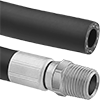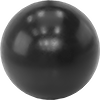Filter by
Fitting Connection
For Use With
Thread Type
Tube OD
Maximum Pressure @ Temperature
Minimum Opening Pressure
Mounting Position
Maximum Temperature
DFARS Specialty Metals
Fluid Handling
Power Transmission
Raw Materials
Lubricating
Fastening and Joining
Facility and Grounds Maintenance
















































